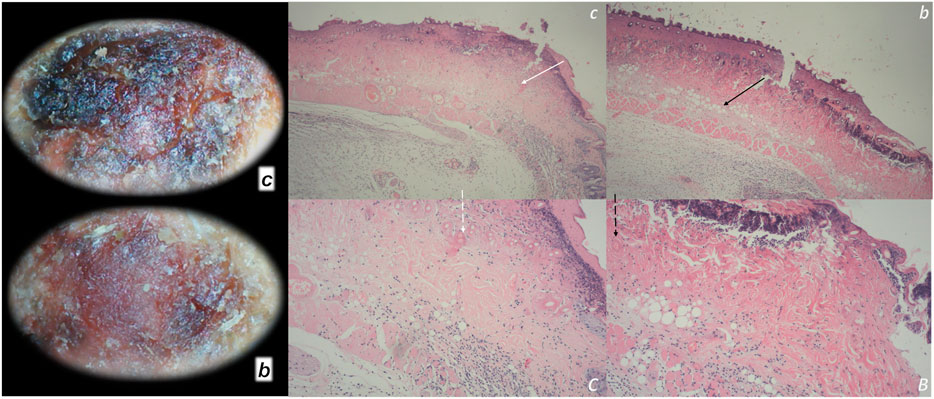Injuries to tendons, ligaments, and other connective tissues are some of the most challenging to heal. They often require lengthy recovery times due to limited blood flow and slow cellular regeneration. Recently, a growing number of athletes and patients have shown interest in peptides for recovery, with a particular focus on bpc 157 benefits. This compound is gaining attention for its ability to aid in connective tissue repair and support overall healing processes, much like other advancements in regenerative medicine.
Contents
What Is BPC 157?
BPC 157, or Body Protection Compound 157, is a peptide derived from a naturally occurring protein found in gastric juice. Originally studied for its effects on the digestive system, it has since been explored for its broader role in tissue regeneration. Its unique mechanisms make it a promising candidate for improving recovery in cases of tendon and ligament damage, muscle tears, and even joint issues.
What sets BPC 157 apart is its potential to influence growth factors and repair pathways. It appears to work by promoting angiogenesis—the formation of new blood vessels—and stimulating collagen synthesis, both of which are vital for connective tissue recovery.
Tendon Healing and Repair
Tendons are notoriously slow to heal because they receive minimal blood supply. For athletes and active individuals, tendon injuries such as Achilles strains, tennis elbow, or rotator cuff tears can significantly impact performance. BPC 157’s ability to increase blood vessel formation is particularly important here, as improved circulation ensures more oxygen and nutrients reach the injured site.
Research suggests that BPC 157 enhances the activity of fibroblasts, the cells responsible for producing collagen and other structural proteins. Collagen is the primary building block of tendons, and by promoting its synthesis, BPC 157 helps accelerate repair and enhance tissue strength.
Ligament Regeneration
Ligaments, like tendons, face similar challenges with slow recovery rates. Injuries such as ACL tears often require surgery and prolonged rehabilitation. Early studies suggest that BPC 157 may play a role in promoting faster ligament healing by activating cellular repair mechanisms. Its collagen-promoting properties can improve the structural integrity of ligaments, potentially reducing recovery times after injury.
While more clinical trials are needed to confirm its effectiveness in humans, preliminary findings in animal models are promising and point toward a regenerative effect that could benefit patients struggling with long-term ligament injuries.
Joint Health and Cartilage Support
Connective tissue also includes cartilage, which serves as a cushion for joints, allowing for smooth movement. Overuse, aging, and high-impact activities can lead to cartilage breakdown, causing pain and mobility issues. BPC 157 has shown potential in protecting and even regenerating cartilage tissue. Its anti-inflammatory properties reduce swelling and discomfort, while its regenerative effects may support long-term joint health.
This makes it an intriguing option for those dealing with chronic conditions such as osteoarthritis or sports-related joint injuries. By promoting cellular repair and reducing inflammation, BPC 157 could provide a dual approach to both symptom relief and structural recovery.
Muscle and Soft Tissue Recovery
Though BPC 157 is best known for its effects on connective tissue, it also supports healing in surrounding muscles and soft tissues. Muscle strains often occur in conjunction with tendon or ligament injuries, and recovery in these cases can be prolonged. BPC 157 may help by enhancing blood flow and reducing oxidative stress, allowing for quicker muscle repair.
This synergy between muscle and connective tissue recovery is crucial, as it ensures that athletes and patients regain both strength and stability during rehabilitation.
The Role of Inflammation Control
One of the significant obstacles to tissue repair is chronic inflammation, which can delay healing and exacerbate further damage. BPC 157 appears to regulate inflammatory pathways, allowing for a healthier healing response. Instead of completely shutting down inflammation—which is necessary in the early stages of healing—it helps balance the process, allowing repair to progress efficiently.
This inflammation control, combined with enhanced collagen production and angiogenesis, creates a strong foundation for connective tissue recovery.
Integration with Rehabilitation
It’s important to note that BPC 157 is not a replacement for traditional treatment methods. Rehabilitation exercises, physical therapy, proper nutrition, and rest remain the cornerstones of recovery. However, integrating peptide therapy may provide an added boost to accelerate the healing timeline and improve overall outcomes.
Athletes, in particular, may benefit from combining BPC 157 with structured rehab protocols, as it could allow them to return to training sooner without compromising long-term tissue strength.
Final Thoughts
The potential of BPC 157 in supporting connective tissue repair makes it one of the most talked-about peptides in recovery science. From tendons and ligaments to joints and cartilage, its ability to promote angiogenesis, stimulate collagen synthesis, and regulate inflammation offers a comprehensive approach to healing. While more human research is needed to validate its benefits fully, the early evidence suggests that BPC 157 could play a key role in how we approach recovery and injury management in the future.
